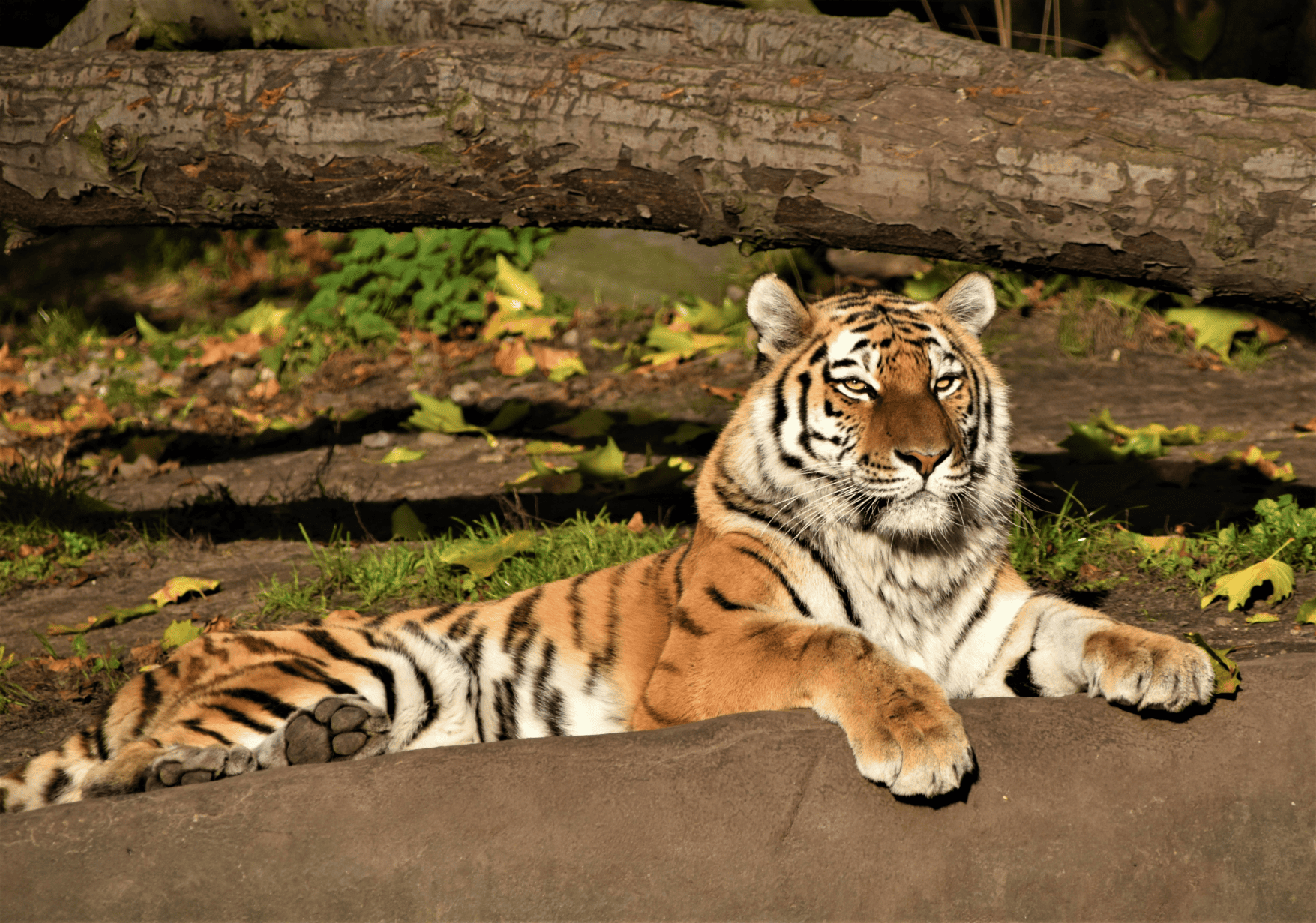Tiger: The Majestic Predator of the Wild
The tiger, an apex predator and one of the most iconic creatures on Earth, is a symbol of power, grace, and raw beauty. Known for its striking orange coat with bold black stripes, this magnificent feline has captivated human imagination for centuries. Tigers are not only vital to the ecosystems they inhabit but also serve as a poignant reminder of the delicate balance between nature and human impact.
Physical Characteristics
Tigers are the largest members of the cat family, with males weighing between 200 and 300 kilograms and measuring up to 3 meters in length, including their tails. Their muscular bodies, long tails, and sharp claws make them efficient hunters. Each tiger’s stripe pattern is unique, serving as both camouflage and identification. These stripes break up their silhouette, helping them blend into the dappled light of forests or tall grasses.
Their powerful jaws and teeth are designed for capturing and killing prey. Tigers possess keen senses, especially vision and hearing, which they use to detect and ambush their targets. Unlike most cats, tigers are excellent swimmers and are often found near water, where they can cool off and hunt prey such as fish or amphibians.
Habitat and Distribution
Tigers once roamed across vast territories in Asia, from the dense forests of Siberia to the mangrove swamps of the Sundarbans. Today, their range has significantly diminished due to habitat loss and human encroachment. Tigers primarily inhabit tropical rainforests, savannas, and grasslands, though they are highly adaptable and can survive in various environments, provided there is sufficient prey and cover.
Diet and Hunting Behavior
Tigers are carnivorous apex predators, feeding on a wide variety of animals. Their prey includes deer, wild boar, antelope, and even large animals like buffalo. A tiger’s hunting strategy is one of stealth and patience. They rely on their ability to silently stalk their prey before launching a sudden and powerful attack, often targeting the neck or throat to deliver a quick kill.
Despite their formidable hunting abilities, tigers are solitary hunters, which can make securing a meal challenging. On average, only one in ten hunts is successful, forcing tigers to expend significant energy in pursuit of their next meal.
Role in the Ecosystem
Tigers play a critical role in maintaining the balance of their ecosystems. By preying on herbivores, they help regulate populations and prevent overgrazing, which in turn supports plant growth and biodiversity. Their presence is an indicator of a healthy environment, as they require large territories and abundant prey to survive.
Behavior and Social Structure
Unlike lions, tigers are solitary animals, with males and females coming together only for mating. Each tiger maintains a territory, which can span hundreds of square kilometers depending on the availability of prey. Males often overlap with the territories of several females, but they are highly territorial and will defend their range against intruders.
Tigers communicate through vocalizations, scent markings, and body language. Their roars can be heard up to three kilometers away and serve as a warning to rivals or a call to potential mates.
Female tigers, or tigresses, are devoted mothers. They give birth to litters of two to four cubs, which remain with their mother for up to two years. During this time, the cubs learn essential survival skills, such as hunting and territory navigation.
Threats to Survival
Despite their dominance in the wild, tigers face numerous threats, primarily due to human activities. Habitat loss from deforestation, agriculture, and urbanization has significantly reduced their range. Poaching is another critical issue, driven by demand for tiger parts in traditional medicine and the illegal wildlife trade.
Human-wildlife conflicts also pose a major challenge, as tigers may prey on livestock, leading to retaliation by local communities. Additionally, climate change is impacting the habitats of certain tiger populations, such as the Sundarbans, where rising sea levels threaten the delicate mangrove ecosystem.
Conservation Efforts
Conservation initiatives have been critical in preventing the extinction of tigers. Protected areas such as national parks and wildlife sanctuaries provide safe habitats, while anti-poaching measures and community-based conservation programs help reduce human-tiger conflicts. Organizations like the World Wildlife Fund (WWF) and governments of tiger-range countries are working to restore tiger populations through initiatives like "Project Tiger" in India.
Global awareness campaigns have also highlighted the importance of preserving this iconic species. Ecotourism in regions with tiger populations has provided economic incentives for local communities to protect their natural heritage.
Tigers in Culture and Mythology
The tiger has long held a special place in human culture, symbolizing power, courage, and majesty. In many Asian traditions, tigers are revered as protectors and are often associated with deities or spirits. They feature prominently in folklore, art, and literature, embodying the untamed spirit of the wild.
The Future of Tigers
Today, there are fewer than 4,000 tigers left in the wild, a stark reminder of the challenges they face. Protecting tigers is not just about saving a single species—it is about preserving the ecosystems they inhabit and the countless other species that depend on these environments. The tiger’s survival is a testament to the success of conservation efforts and a call to action for greater environmental stewardship.
